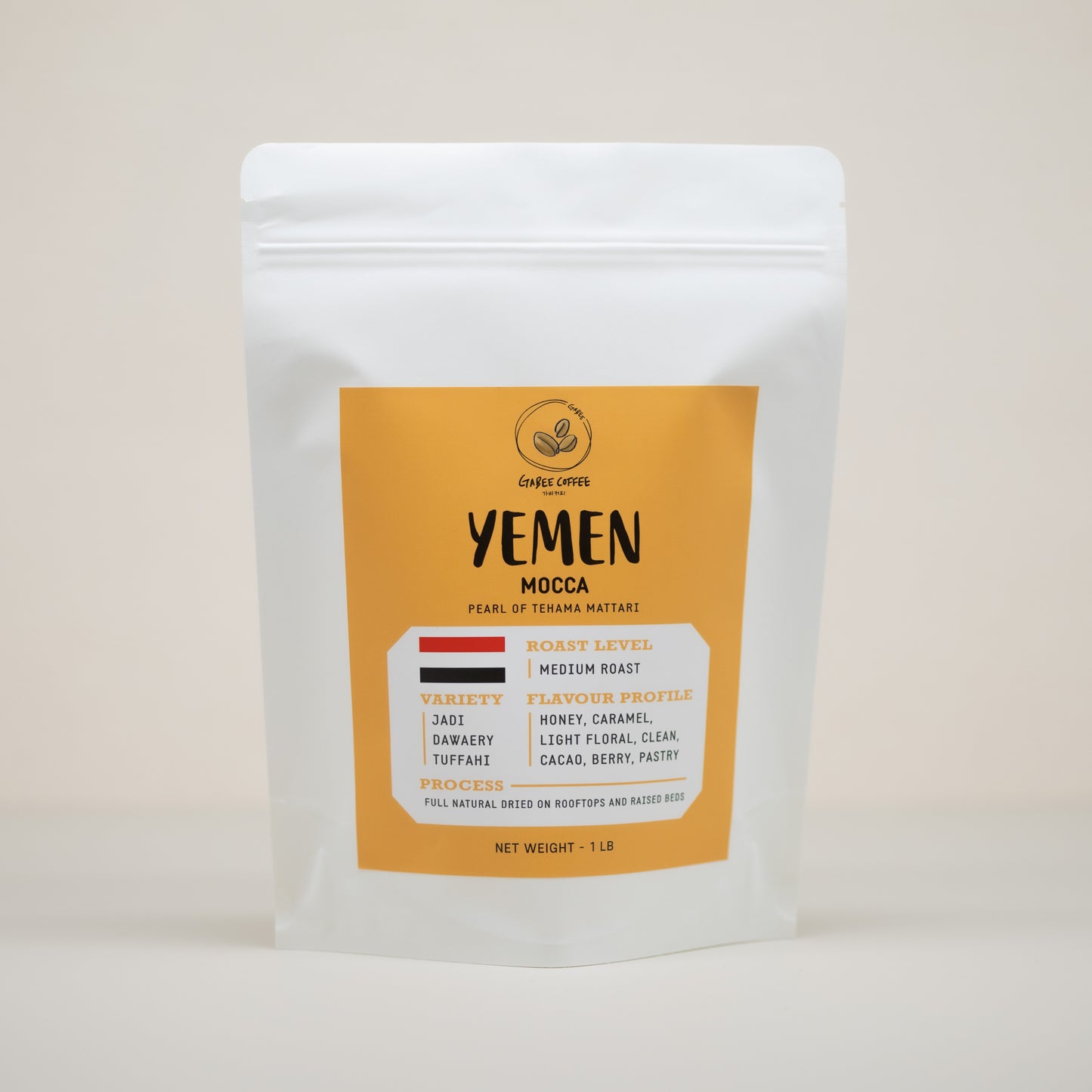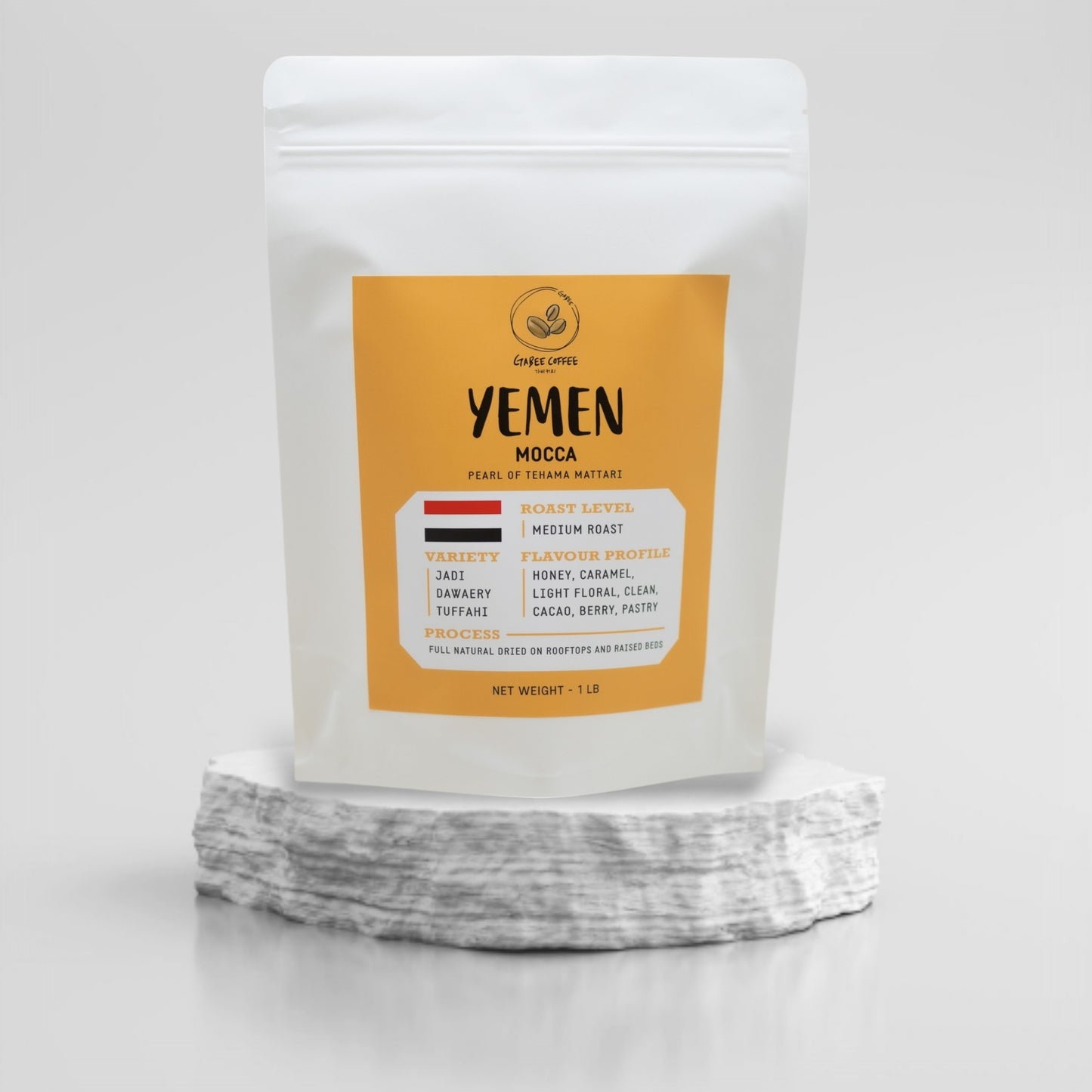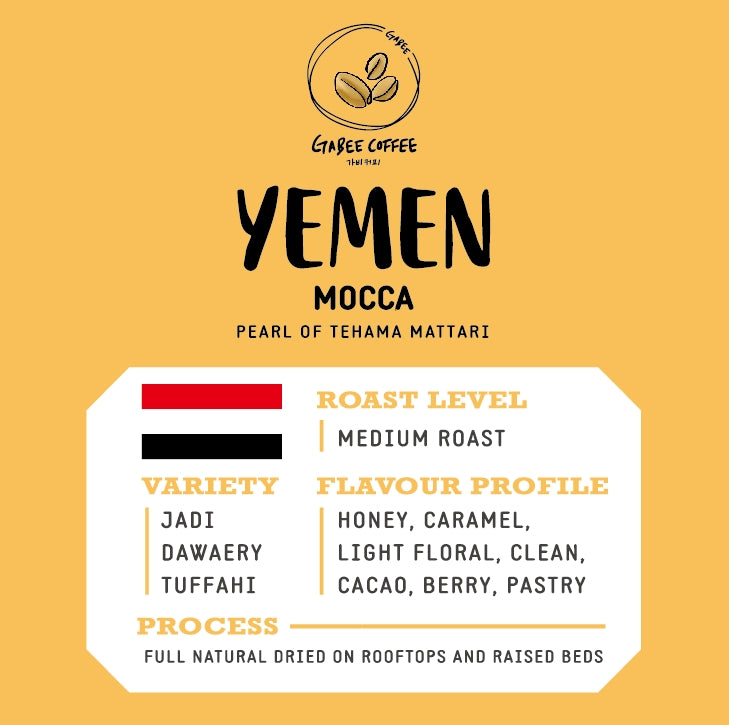GABEE COFFEE
YEMEN MOCCA Pearl of Tehama Mattari
YEMEN MOCCA Pearl of Tehama Mattari
Couldn't load pickup availability
After a long wait, Yemen is finally back at Gabee Coffee.
This coffee is produced by legacy farmers of various sizes in the Mattari-Sayhee mountain valley, in western Yemen’s Sana’a Governorate. Coffee-growing families in this part of Yemen, similar to many others across the country, tend parcels of terraced land passed through many generations. “Matari” is a term of terroir distinction, similar to “Kona”, that refers to high-quality heirloom coffee varieties produced in the unique climate and soil of this part of Sana’a, where subtropical conditions and available water springs allow coffee farmers to irrigate—something almost unheard of in the majority of coffee-producing areas in Yemen.
All Mattari coffee, as traditionally everywhere in Yemen, is processed as a natural: hand-picked, sorted for consistency, and dried in a single layer in full sun on raised beds or rooftops. And due to the arid climate and slow maturation patterns, coffee is picked almost year round. This particular Mattari blend is carefully curated by Pearl of Tehama from 98 of their partner farmers in the Mattari-Sayhee valley, where households typically manage 200-1000 coffee trees apiece.
Yemen is the oldest territory on Earth to cultivate coffee. Its seed stock, originally transported from wild arabica landraces in Ethiopia, was used to create the world’s first ever coffee farms where coffee would be grown commercially for trade across the Arabian peninsula and eventually mainland Europe. (“Arabica” itself referred to the Arabian coffee supply that was the West’s first in history.)
Maintaining coffee trees in a climate as harsh and uniquely challenging as Yemen’s western and northern ranges requires the kind of proven techniques that only generations of farming can bestow. Coffee farms are iconically terraced on arid, incredibly steep slopes. Where irrigation is not available, bore holes are dug manually into the rock to access individual water reserves for each tree wherever rain is scarce. Coffee trees are spaced generously, about 1000 per hectare (compared to 4000-6000 common in Latin America), both by necessity on the narrow terraces, as well as for better groundwater access and erosion control. Raising young coffee trees is a matter of hardening them for a lifetime of vicious elements and water scarcity. Older coffee trees become very spacious and tall, and often end up hanging their branches over the terrace edge, known locally as “hanging gardens”. Above the coffee, shade trees are carefully selected and positioned for how well they block water evaporation. As can be imagined, productivity is very low in such conditions. And still, over one million people work in Yemen’s coffee trade, from farm to export.
Roast Level: Medium
Cup Profile: Honey, Caramel, Light Floral, Clean, Cacao, Berry, Pastry
Varietals: Jadi, Dawaery, Tuffahi
Region: Governorate Governorate, Yemen
Altitude: 1,500-1,700 masl
Share






